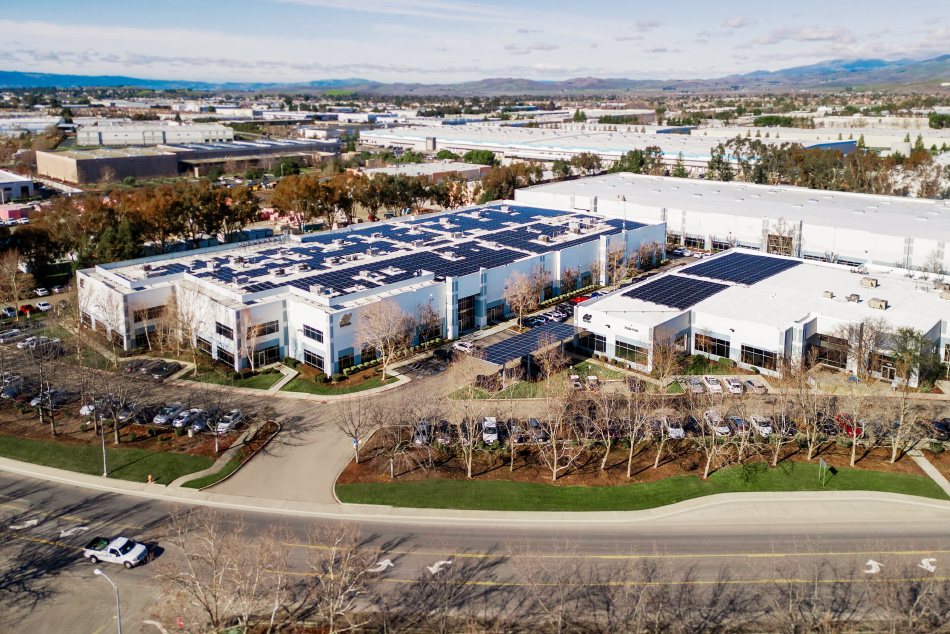The full scope of Phase One of the Topcon solar project includes panels on the rooftops of buildings 7400 and 7500, which measure 67,701 sq. ft. and 30,725 sq. ft., respectively. The larger structure, Building 7400, will have 1,344 panels while Building 7500 will have 240. According to Coronado, the improvements don’t end there.
“We are also installing a series of solar carports, one of which will be installed at 7400 and another one in 7500 during Phase One and four more at Building 7901 as part of Phase Two,” she said. “The carports, which will also serve as locations for EV charging stations, are designed with scalability in mind. So outlets for future electrical charging stations can easily be added as demand increases. And it is certain to increase, given the benefits of an EV in an area with gas prices as high as they are here.”
Phase Two of the solar project will include all of the 30,500 sq. ft. Building 7901 as well as the John Dice Training Center which adjoins it and shares its electricals. Coronado said Phase Two will commence shortly after the wrap up of Phase One but will still reap the same benefits as the structures covered in Phase One.
“Yet another motivation for acting on the solar project when we did was the change taking place in California with regard to reimbursement for excess power generated through solar,” said Coronado. “New rules established a dramatically lower reimbursement, approximately 20% versus the current 90%. By acting when we did, we were able to secure the much more favorable reimbursement rates and even get them to apply to Phase Two of the project.”
To a passerby, the changes taking place on the rooftops of any of Topcon’s three structures will seem inconsequential. But, according to Michael Gomes, they are representative of the efforts toward sustainability taking place within the company on an almost daily basis. “As one of my colleagues once told me, ‘Nobody likes change, but everybody likes progress,’” he said. “The difference between the two is purpose. And there are few better purposes — both local and global — than hewing a path toward a sustainable future. This is a very big step in that direction.”
Panel installation work began in October 2023. All facets of Phase One are expected to be completed by late June 2024.















